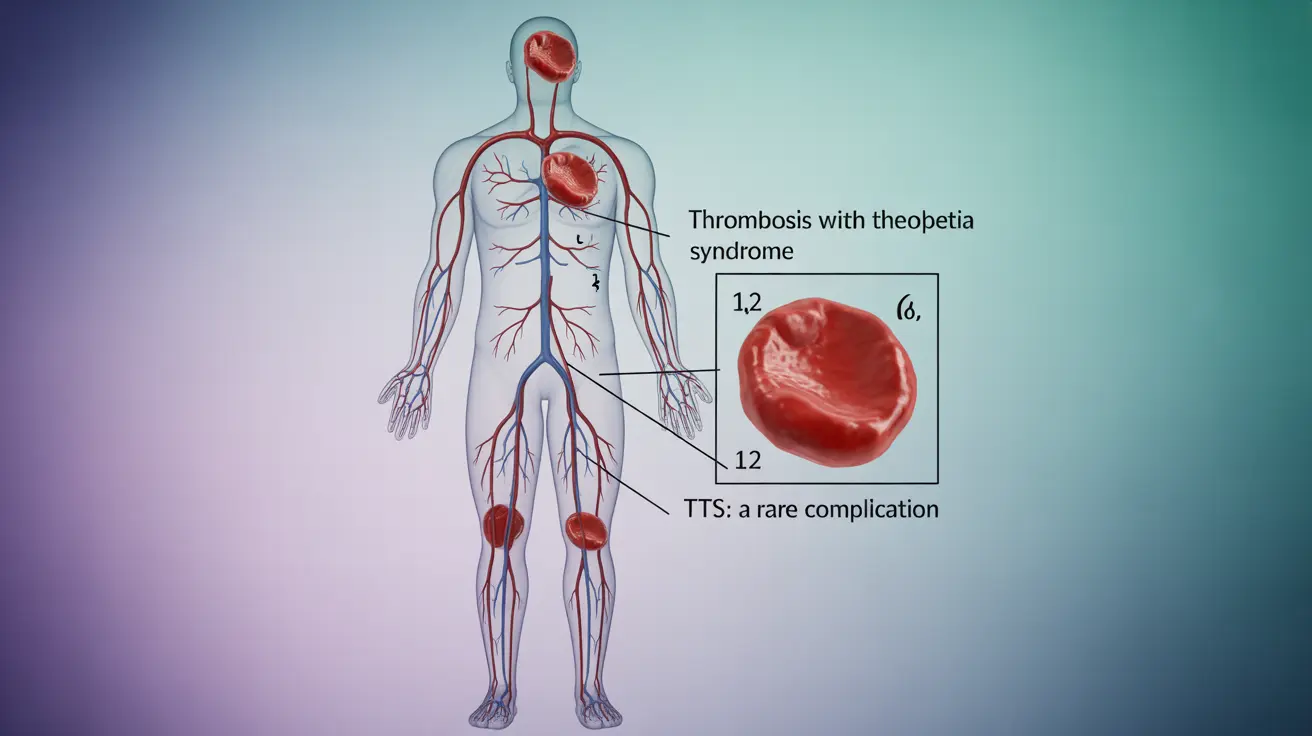Thrombosis with Thrombocytopenia Syndrome (TTS) is a rare but serious condition that has gained attention during the COVID-19 pandemic due to its association with certain vaccines. This complex medical condition involves blood clots (thrombosis) occurring simultaneously with low blood platelet levels (thrombocytopenia), creating a challenging medical scenario that requires prompt recognition and treatment.
Understanding TTS is crucial for both healthcare providers and the public, as early detection and appropriate management can significantly impact outcomes. Let's explore the key aspects of this condition, from its symptoms and causes to treatment options and risk factors.
Understanding TTS: Symptoms and Severity
TTS presents with several distinctive symptoms that typically appear 4-42 days after vaccination. The condition can manifest in various ways, depending on where blood clots form in the body:
- Severe headache that doesn't respond to regular pain medications
- Blurred vision or other visual changes
- Severe abdominal pain
- Chest pain or shortness of breath
- Leg pain or swelling
- Tiny blood spots under the skin beyond the injection site
- Easy or excessive bruising
The severity of TTS can range from moderate to life-threatening, making it essential to seek immediate medical attention if symptoms develop, particularly within the first month after vaccination.
Vaccine Association and Risk Factors
TTS has been primarily associated with adenovirus vector COVID-19 vaccines, specifically the Johnson & Johnson/Janssen and AstraZeneca vaccines. It's important to note that this side effect is extremely rare, occurring in approximately 1 per 100,000 to 1 per million doses administered.
Risk Factors for TTS Development
Several factors may influence the risk of developing TTS:
- Age (more common in adults under 50)
- Gender (slightly higher risk in women)
- Previous history of blood clotting disorders
- Timing after vaccination (highest risk within first few weeks)
Diagnosis and Treatment Approaches
Diagnosing TTS requires specific blood tests and imaging studies to confirm both the presence of blood clots and low platelet counts. Healthcare providers use a combination of:
- Blood platelet count measurements
- D-dimer tests
- Imaging studies (CT scans, MRI, or ultrasound)
- Antibody testing specific to TTS
Treatment Options
Treatment for TTS requires a specialized approach different from standard blood clot treatment. The main components include:
- Non-heparin blood thinners
- Intravenous immunoglobulin therapy
- Close monitoring in a hospital setting
- Specialized hematology consultation
Risk-Benefit Analysis of Vaccination
When considering vaccination, it's important to weigh the extremely rare risk of TTS against the much higher risks associated with COVID-19 infection. Healthcare providers can help individuals make informed decisions based on their personal risk factors and circumstances.
Frequently Asked Questions
- What are the symptoms of thrombosis with thrombocytopenia syndrome, and how serious is the condition?
TTS symptoms include severe headache, visual changes, abdominal pain, chest pain, leg swelling, and unusual bruising. The condition is serious and can be life-threatening if not treated promptly, but with early detection and proper treatment, many patients recover.
- Which COVID-19 vaccines are associated with an increased risk of thrombosis with thrombocytopenia syndrome?
TTS has been primarily associated with adenovirus vector vaccines, specifically the Johnson & Johnson/Janssen and AstraZeneca COVID-19 vaccines. mRNA vaccines (Pfizer and Moderna) have not been linked to TTS.
- What are the risk factors for developing thrombosis with thrombocytopenia syndrome after vaccination?
Risk factors include being under 50 years old, female gender, and having a history of blood clotting disorders. However, TTS can occur in any individual who receives an adenovirus vector vaccine, though the risk is extremely rare.
- How is thrombosis with thrombocytopenia syndrome treated, and what are the options for managing symptoms?
Treatment typically involves non-heparin blood thinners, intravenous immunoglobulin therapy, and close medical monitoring. The specific treatment plan is tailored to each patient's symptoms and condition severity.
- Are the benefits of COVID-19 vaccination worth the risk of developing thrombosis with thrombocytopenia syndrome?
For the vast majority of people, the benefits of COVID-19 vaccination significantly outweigh the extremely rare risk of TTS. The risk of serious complications from COVID-19 infection is much higher than the risk of developing TTS from vaccination.




